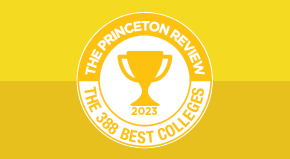
In a perfect world, you could simply apply to the schools of your dreams and, upon acceptance, choose which one to attend. For most applicants, however, the process isn’t so straightforward. In particular, the expense of college is an important factor to consider.
Students rarely (if ever) pay the sticker price for a college education. That’s what scholarships and financial aid are for! Eighty-six percent of undergraduates receive financial aid! And the average aid award is $14,940. To get the best possible aid package, you’ll need to be strategic. Here are four proactive steps you can take to maximize your financial aid—and minimize how much you pay for college.
Tip #1: Consider All of Your Options—And Don’t Assume That Paying More Means You’ll Earn More After Graduation
If it feels like everyone is applying to the same set of schools, that’s because some well-regarded brand-name schools get a lot of applicants. These schools are indeed often great—but they’re not the only ones! There are literally hundreds of top colleges (we recommend starting with these). As you research, consider how prospective schools will support you—not only during college (with financial aid), but also after college (with employment prospects). In particular, you should investigate these three key factors:
- Availability of career services
- Average levels of student debt at graduation
- Access to alumni support
Even if money is no object (as is rarely the case), the above factors—which contribute to a school’s Return on Investment (ROI)—are still worth looking into. Don’t assume that a school with a higher sticker price is automatically going to offer you more or better employment opportunities. A number of considerations determine those, including your major, career interests, intentions to pursue additional degrees—and, of course, the career services and professional development opportunities you get as an undergraduate. Now, if a more expensive school does seem to be your ideal fit, then you may be well advised to go for it—with the caveat that you need not assume that a school’s opening financial aid offer will be the final one.
Tip #2: Apply for Financial Aid—Even if You Don’t Think You’ll Qualify
Too often, we see families miss out on the opportunity to get federal aid—not because they wouldn’t qualify, but because they didn’t apply in the first place! Don’t be one of the students who pay more for their education because they didn’t apply for federal aid.
The FAFSA—that’s Free Application for Federal Student Aid—becomes available for the next school year on October 1. Make plans to complete it!
Tip #3: Get Into More Schools, and Avail Yourself of More Opportunities to Negotiate
As college funding expert Kalman Chany writes in Paying for College, “One good offer can frequently lead to others.” Students who need financial aid should, therefore, apply to a variety of colleges. These should primarily consist of schools that will be a great fit (academically and financially). They may also include a couple of schools at which you’re less certain of gaining admission. Finally, it’s prudent to apply to a couple of schools that (a) you’re pretty much guaranteed to get into; (b) you or your family could afford, even with no aid; and (c) you’d be happy to attend. (All of the schools on your list should be colleges you’d be happy to attend; otherwise, why apply?) The process is a bit like comparison shopping for clothes or electronics—the more sales and discounts you can cite, the more leverage you’ll have in getting a better offer. If one school offers you a great package, there’s a chance you can use that offer to negotiate for more aid with the college you’d rather attend.
Tip #4: Utilize the Resources Available to You
If your parents—or relatives, advisors, friends—have gone through this process before, they may have helpful tips to share with you. Listen to your counselor, too, for advice about what works (and what doesn’t) as you apply for aid.
Last but certainly not least, do your research! We’ve identified the 200 best value colleges—academically excellent institutions that give students the best return on their tuition investment. At these schools, students tend to get more financial aid, graduate with less debt, benefit from outstanding career services during college, and earn great salaries after graduation. If you know you’ll need financial aid to attend college, we recommend that you start your search with these schools!
With pre-planning and research, you can set aside your worries about paying for college and start focusing on the good stuff—your future education.Read More
Explore Colleges For You
Connect with our featured colleges to find schools that both match your interests and are looking for students like you.
Get Started on Athletic Scholarships & Recruiting!
Join athletes who were discovered, recruited & often received scholarships after connecting with NCSA's 42,000 strong network of coaches.
Best 388 Colleges
154,000 students rate everything from their professors to their campus social scene.



